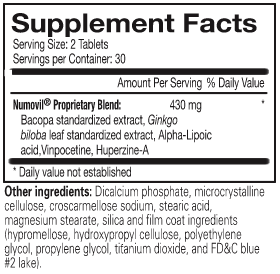Mailbag: Proprietary Blend Blues

Sometimes imperfect protection is better than no protection at all; Proprietary Blends protect against copycat formulas
Dear AllStarHealth.com,
I’ve been using supplements for a long time and have noticed that some formulas list all their ingredients and tell you exactly how much of each one there is. Other products lump everything into one list under a heading like ‘Proprietary Blend’ or “Exclusive HyperDiet Complex” without specifying ingredient amounts. Why do only some products specify amounts? I would think every customer wants or even needs to know that.
Best regards,
Tom Wilton
Framingham, MA
Dear Tom,
A lot of other customers have noticed this as well. Some have questioned whether this Proprietary Blend Approach is an attempt to conceal information from customers, such as a worrisome level of caffeine, sugars, or some other red-flag ingredient.
We certainly agree with you that it’s in the customer’s best interest to see exact amounts of all ingredients in a product. And, actually, we’re sure that supplement companies themselves would agree also. We know them well and it’s clear that without exception they’re all really proud of their products and have nothing to hide. Nothing to hide, that is, from you.
In fact, brands are trying to conceal the exact amounts of ingredients in a formula, but they do this specifically to conceal that information from their competitors.
This is because nutritional supplement companies don’t enjoy the same kinds of intellectual property protections as other industries, especially the critical protections like patents. Patents are very difficult (and expensive) to obtain for almost all supplement ingredients, especially naturally-occurring compounds like vitamins, minerals and herbs.
Without a patent, it’s very hard for a supplement company protect the fruits of all their hard work and all the resources they poured into researching and developing their product. There’s very little to prevent a competitor from simply copying and marketing a rival’s formula.
One of the few ways, essentially the only way, to prevent this from occurring is the Proprietary Blend Approach. A compromise of sorts, this approach obliges the manufacturer to list all the ingredients in order of concentration, from most to least, but doesn’t require them to list individual amounts. It does, though, require the maker to specify the quantity of the Proprietary Blend in each serving.

Here's a typical proprietary blend as represented on a supplement label.
So it’s sometimes possible to deduce ballpark amounts of a nutrient by looking at the amount of the Proprietary Blend. If a product contains 200 mg of a HyperEnergy Complex that contains caffeine, green tea extract, synephrine and tyrosine, you know that there’s no more than 200 mg of caffeine and most likely considerably less than that because of the presence of other ingredients.
If you ever really need to know the exact amount of any one ingredient in a Proprietary Blend, i.e., for a medical reason, very often you can contact that company directly and get that information if you approach it the right way:
1) Call or email the company and state at the outset that you have a technical question about a product.
2) Cite your reason for wanting to know how much of (ingredient) is present in each serving of (product) and state that you’re asking specifically because you’re interested in using that product.
You may or may not get an immediate response, usually the request is passed along to the R&D department itself.
Your chances of success are much better if you have a medically or scientifically legitimate reason for needing to know the amount, and are able to state that in a concise fashion; “My doctor said I can’t have more than 100 mg of caffeine per day and I’m not sure if I can use your product.” Your chances aren’t so good when the inquiry is based on hearsay, innuendo or incomplete information.
It’s definitely a compromise and an imperfect one, but there’s little to suggest that any of this will change in the near future. In the meantime, the Proprietary Blend Approach is something everyone in the industry has to live with, manufacturers, distributors and customers alike.



